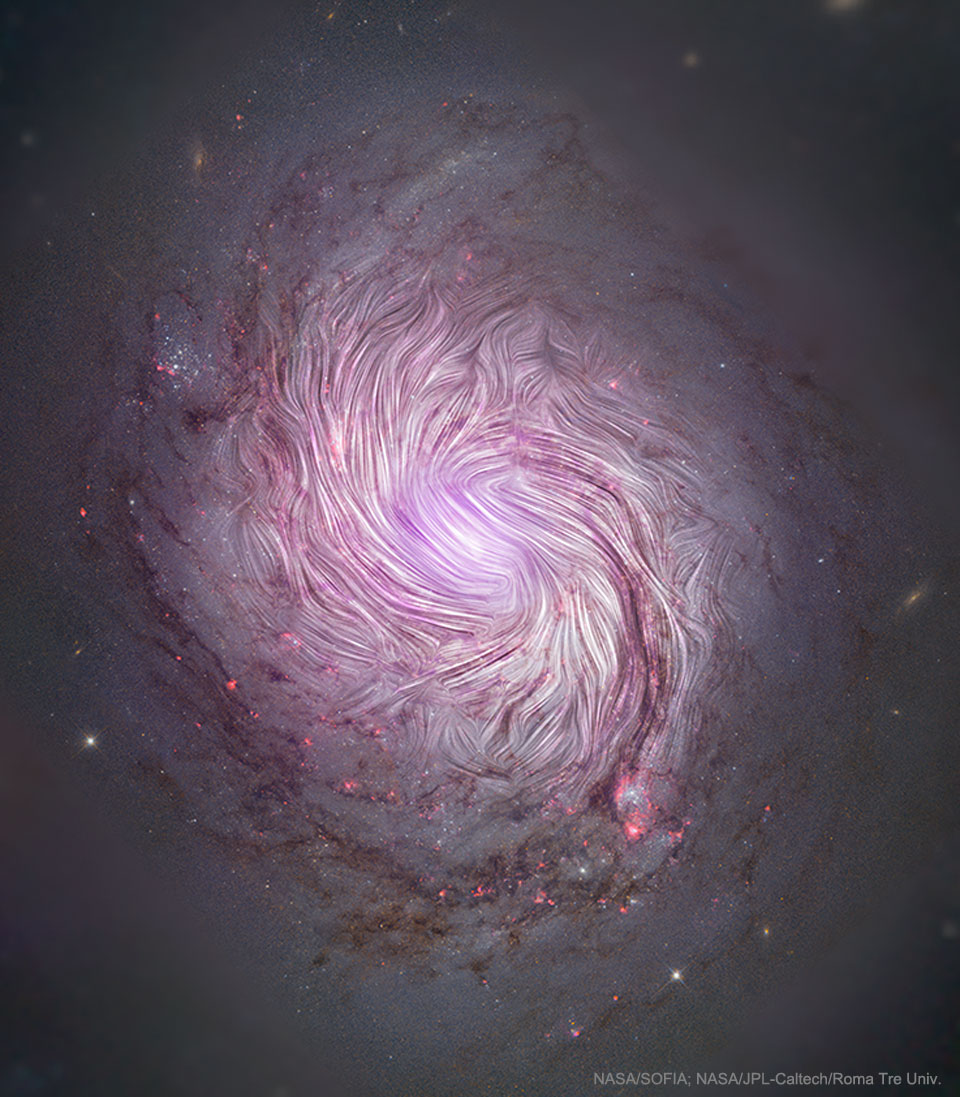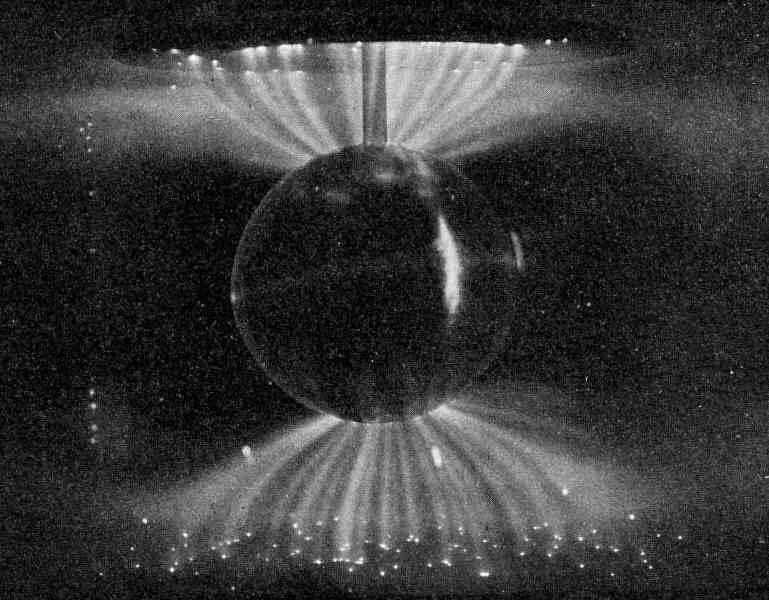BDanielMayfield wrote: ↑Mon Dec 16, 2019 1:38 pm
...
It makes sense that a free floating magnetic grain would
align with the magnetic field that it's in, but must it also rotate? Is the rotation of such grains also helping to produce and/or sustain the field? In other words, what is the role of rotation?
Grain rotation is
required as it leads to a stable, non-random condition. FIR black-body emission from that grain will then have a constant preferential polarization direction. In short, all grains spin-up from incident light radiation but only weakly magnetic (paramagnetic) grains will develop a magnetic moment. These grains will precess in the external B field and eventually
the rotation axis will align with the B field. The grain's long-axis ends up perpendicular to the external B field.
Again, it's the spin axis that aligns with the field, not the grain. If it weren't for the radiation-induced spin, grain orientations would be more chaotic due to collisions thus randomizing the FIR polarizations.
http://bgandersson.net/grain-alignment wrote:
As noted above, whereas grains of any composition will (according to RAT [Radiative Alignment Torque] theory) be spun up by the radiation, only those made up of paramagnetic materials will align with the magnetic field. However, for strong, and directional enough, radiation fields, grains made up of other materials (such as diamagnetic carbon solids) might instead align with the direction of the light.
...
Once the grain acquires a magnetic moment, that magnetization will interact with an external magnetic field, and cause the grain’s spin axis to precess around the direction of the magnetic field (like a wobbly spinning top). As the radiation illuminates the different faces of the grain as it wobbles, the torques turn the spin axis to coincide with the magnetic field direction.
The external magnetic field is neither produced nor sustained by the rotating grains.
Extending the process for a single grains to large numbers, you can see how the B field lines can be traced in an image.
 The Magnetic Fields of Spiral Galaxy M77
The Magnetic Fields of Spiral Galaxy M77

